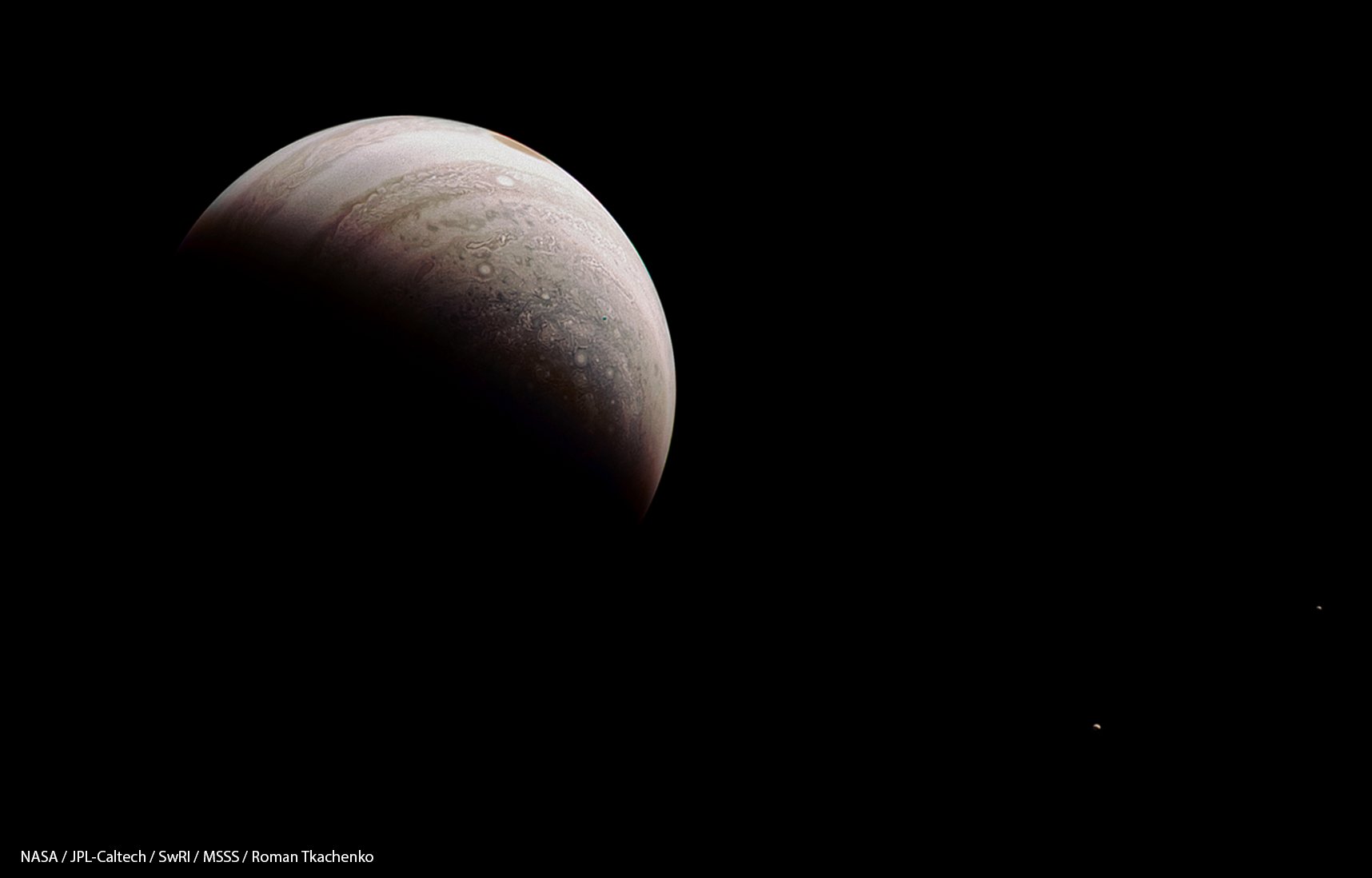
NASA’s Juno spacecraft has successfully completed its fifth close flyby of Jupiter, gathering more scientific data and sending back more incredible images of the largest planet in our Solar System. Juno, the first mission dedicated to Jupiter since Galileo, has been helping scientists to understand some of the long-standing mysteries about the largest planet in our Solar System.
Juno’s closest approach during the flyby occurred on Monday, March 27, at 1:52 a.m. PDT (4:52 a.m. EDT, 8:52 UTC). All of the spacecraft’s science instruments were operating during the flyby, and now scientists back on Earth will have even more data to go through from the mission so far, as well as, of course, more stunning images.
During each close flyby, Juno can see Jupiter’s clouds in incredible detail, revealing intricate and complex formations, especially at the planet’s poles. Indeed they look like works of art. While Jupiter’s mid-latitude and equatorial regions are dominated by broad bands of clouds, the poles features many circular cyclones and other cloud formations. As seen from above the poles, Jupiter almost looks like a completely different planet. At closest approach, Juno is about 2,700 miles (4,400 kilometers) above Jupiter’s cloud tops, traveling at a speed of about 129,000 miles per hour (57.8 kilometers per second) relative to the planet.
As mentioned earlier by Scott Bolton, principal investigator of Juno from the Southwest Research Institute in San Antonio, for Juno’s fourth flyby last February, “This will be our fourth science pass – the fifth close flyby of Jupiter of the mission – and we are excited to see what new discoveries Juno will reveal. Every time we get near Jupiter’s cloud tops, we learn new insights that help us understand this amazing giant planet.”
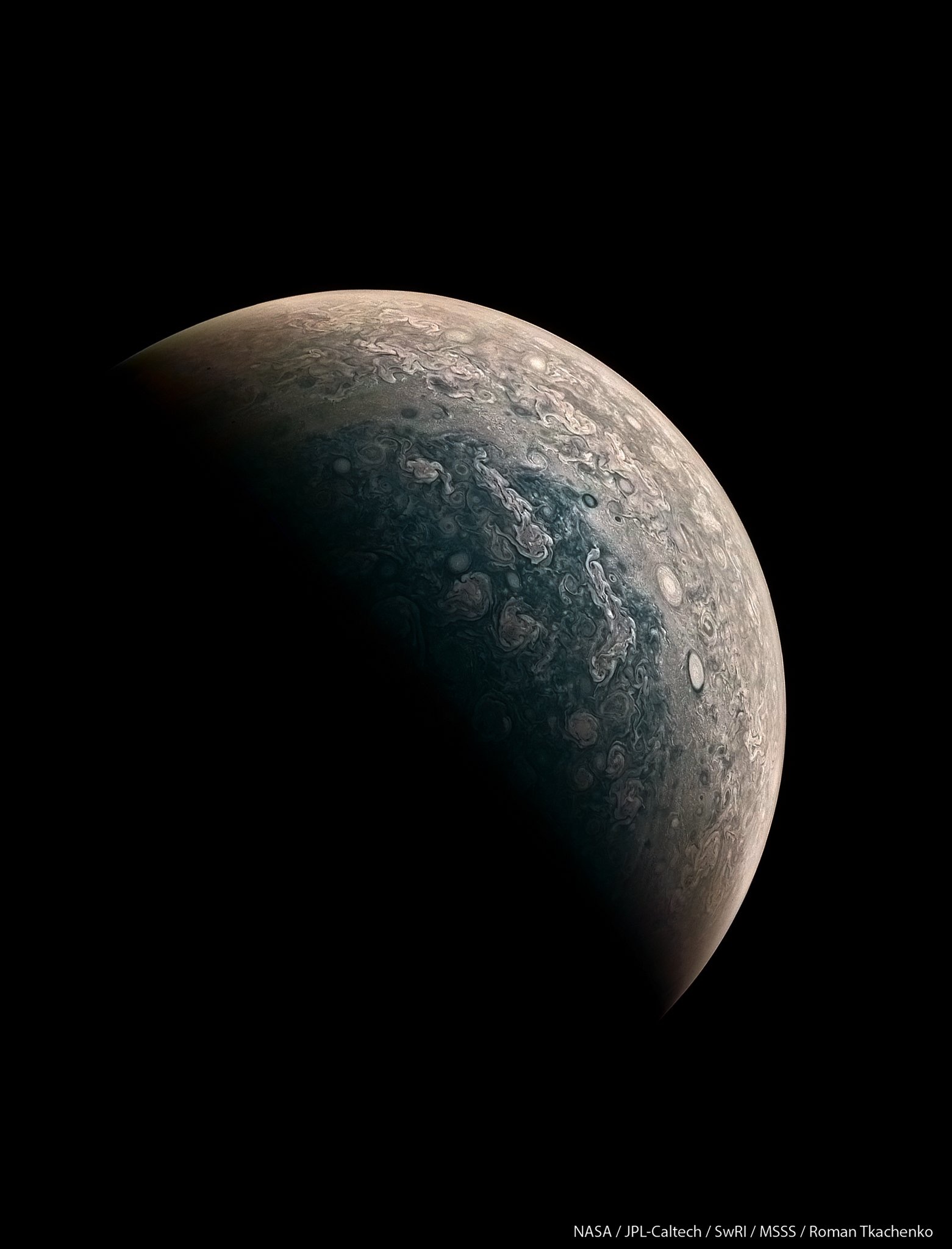
Jupiter, the largest planet in our Solar System, is a gas giant with a deep atmosphere dominated by hydrogen and helium. It is 2.5 times the mass of all the other planets in the Solar System combined, including Saturn and the ice giants Uranus and Neptune. Jupiter doesn’t have a solid surface like rocky planets, but rather is thought to have a dense core surrounded by a layer of liquid metallic hydrogen, with some helium, and an outer layer predominantly composed of molecular hydrogen.
Last February, it was announced that Juno would remain in the same orbit around Jupiter for the rest of its mission. This is an elongated 56-day orbit, which brings the spacecraft close in over the cloud tops before swinging out farther away from the planet again. Juno was supposed to then switch to a closer, 14-day orbit, but a problem with the main engine meant that the new orbit might be less than desirable, so it was decided that the spacecraft would remain in the same orbit it is in now, for the rest of the mission.
“During a thorough review, we looked at multiple scenarios that would place Juno in a shorter-period orbit, but there was concern that another main engine burn could result in a less-than-desirable orbit,” said Rick Nybakken, Juno project manager at NASA’s Jet Propulsion Laboratory in Pasadena, California. “The bottom line is a burn represented a risk to completion of Juno’s science objectives.”
The problem with the engine began when two helium check valves that are part of the plumbing for the engine did not operate they way they should have when the propulsion system was pressurized last October. Telemetry from Juno indicated that it took several minutes for the valves to open, compared to only a few seconds during past main engine firings. That could cause a serious problem when trying to enter the new orbit.
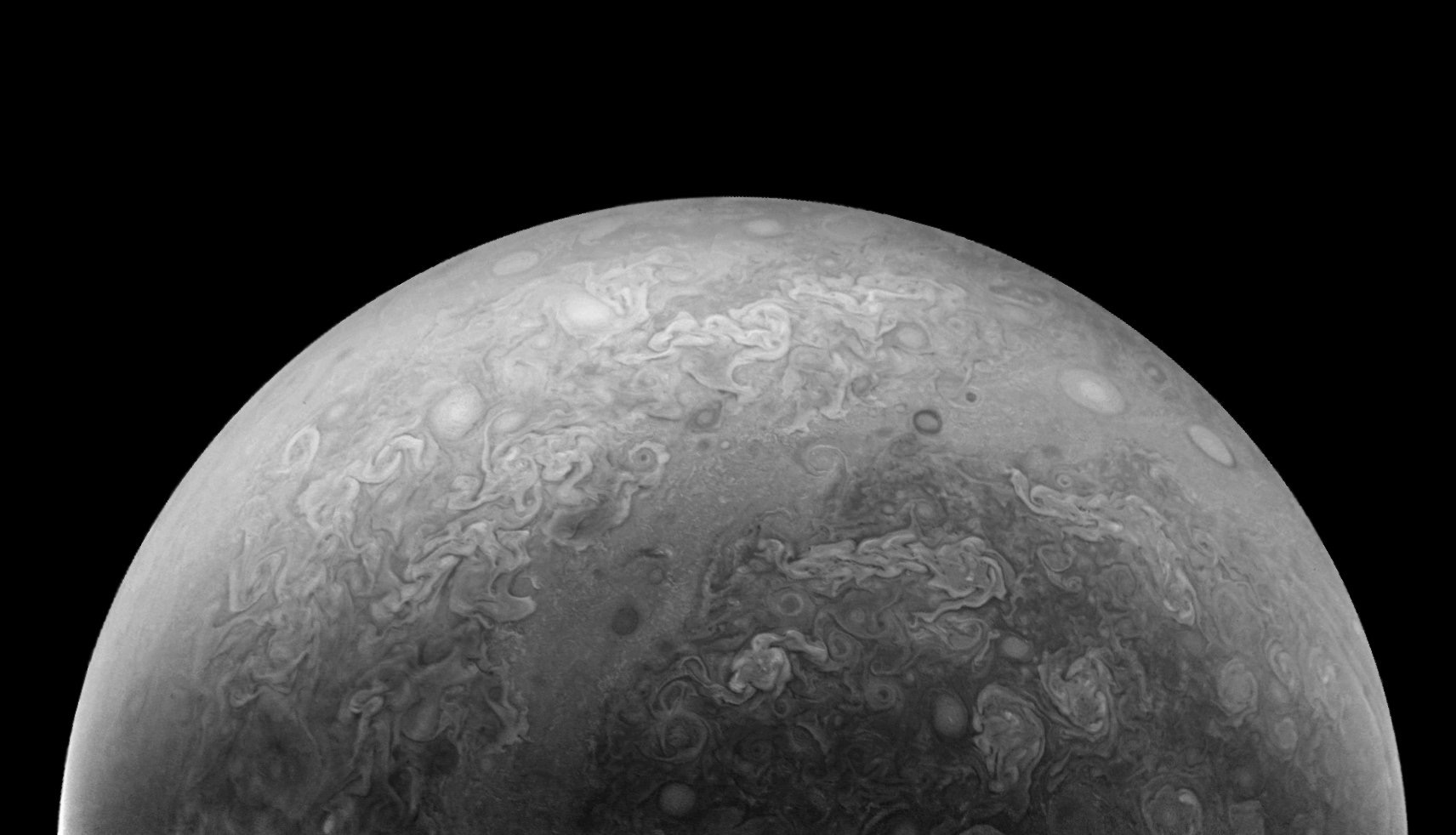
While a disappointment, there are actually some advantages to being in the current orbit. The shorter 14-day orbit would have kept Juno much closer in to Jupiter at all times; while this is good for science, it meant that the spacecraft would also have been exposed to Jupiter’s intense radiation for much longer periods of time.
“Another key advantage of the longer orbit is that Juno will spend less time within the strong radiation belts on each orbit,” said Bolton. “This is significant because radiation has been the main life-limiting factor for Juno.”
There are also some scientific advantages. When Juno is farther out during each longer orbit, it will be able to better examine the region of space that is dominated by Jupiter’s powerful magnetic field. This includes the far magnetotail, the southern magnetosphere, and the magnetospheric boundary region called the magnetopause. Scientists want to study how the magnetospheres interact with the solar wind coming from the Sun. The altitude of Juno during each closest approach still remains the same however, which is when the most breathtaking images are taken.
Apart from the engine problem, Juno is in excellent health.
“Juno is healthy, its science instruments are fully operational, and the data and images we’ve received are nothing short of amazing,” said Thomas Zurbuchen, associate administrator for NASA’s Science Mission Directorate in Washington. “The decision to forego the burn is the right thing to do – preserving a valuable asset so that Juno can continue its exciting journey of discovery.”
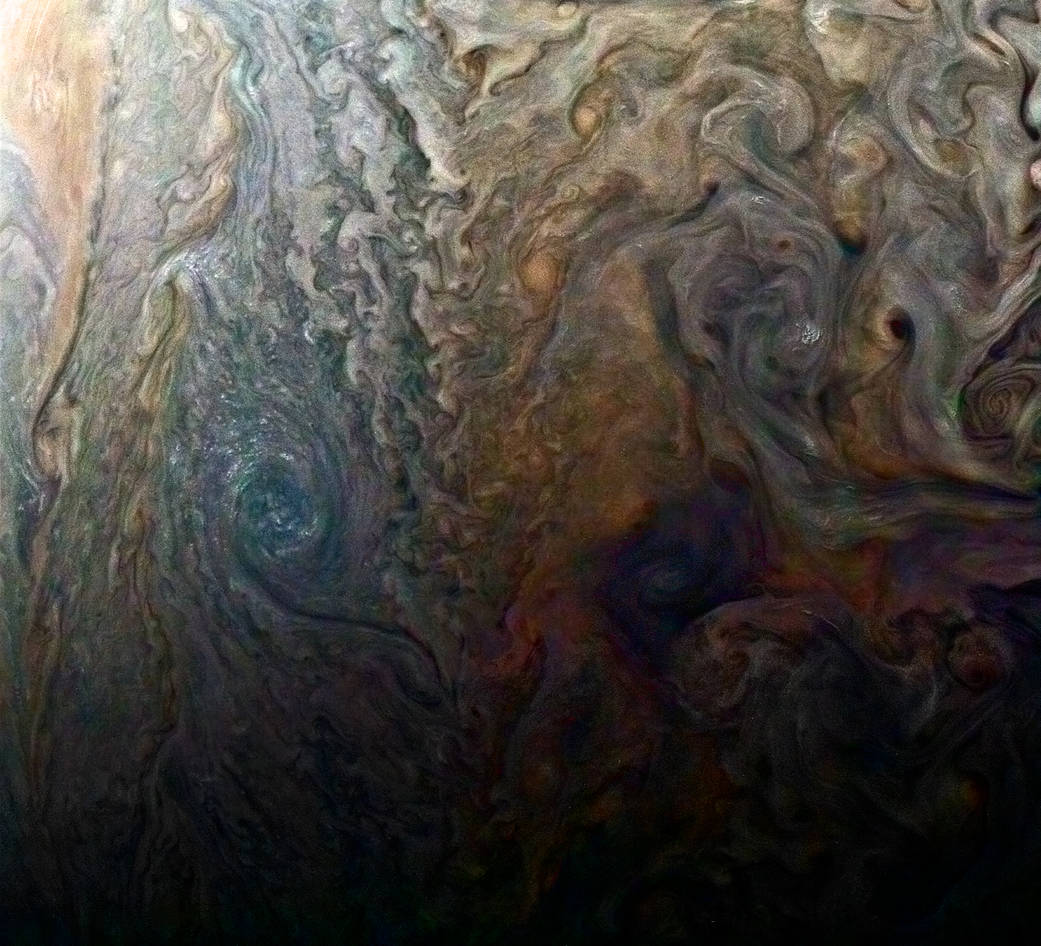
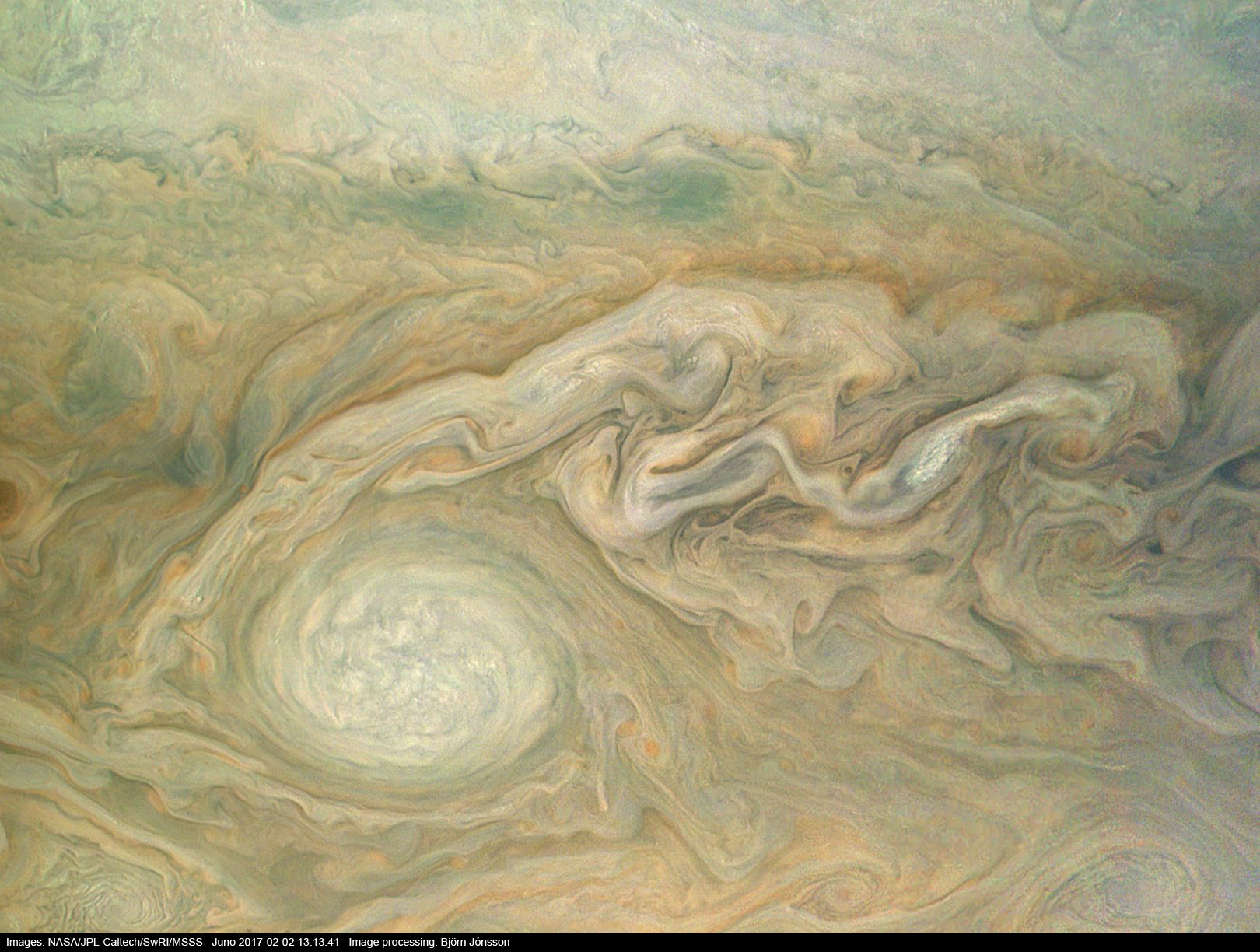
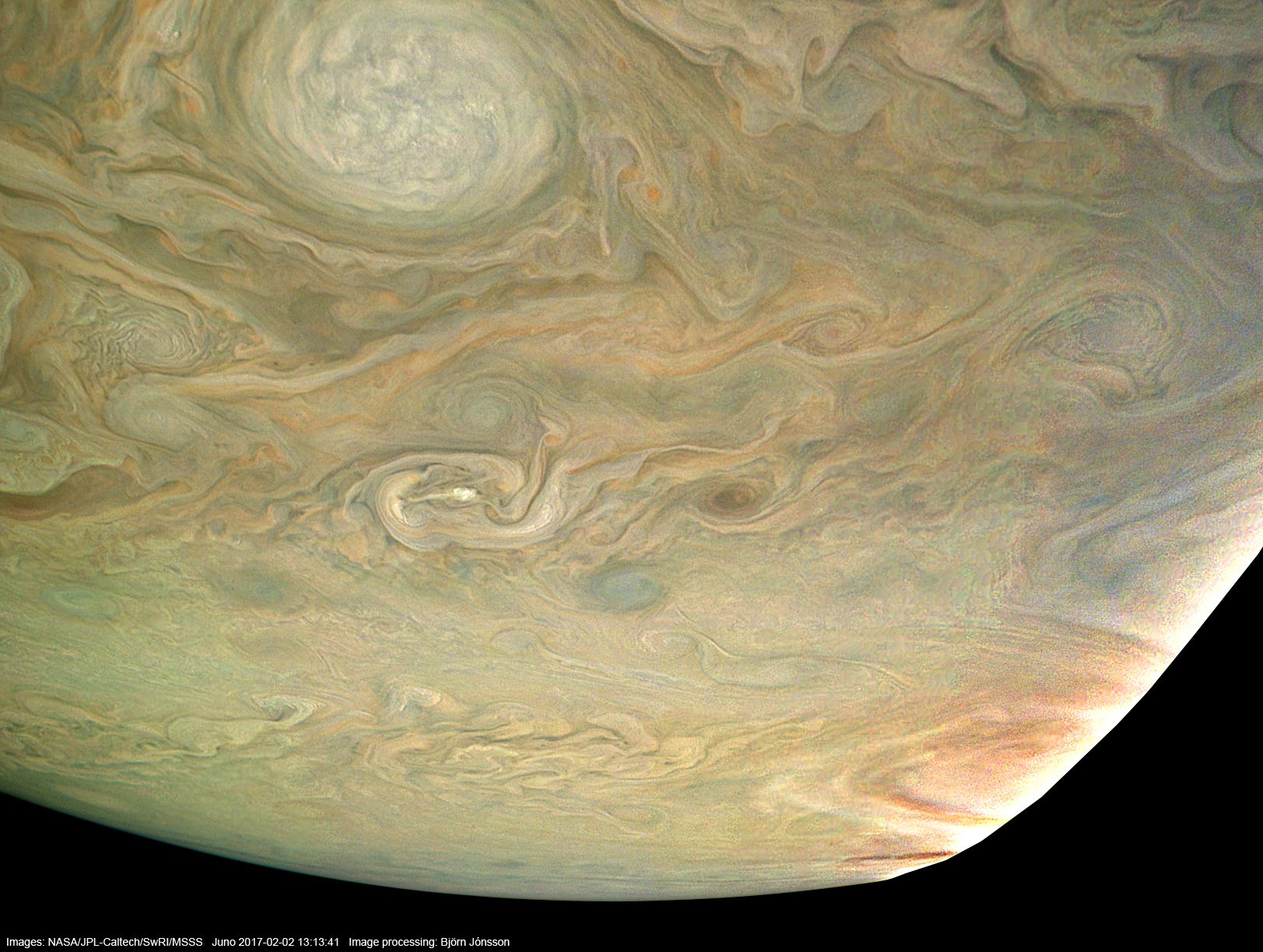
Juno’s findings so far include the fact that the distinctive “belts” in the clouds are not just a “surface” feature, but rather they actually extend deep down into Jupiter’s thick atmosphere. Juno has also found that Jupiter’s magnetic fields and aurora are larger and more powerful than previously thought. Using its Microwave Radiometer (MWR) instrument and its largest antenna, Juno can “see” about 215 to 250 miles (350 to 400 kilometers) below the top cloud deck, which essentially is still just a scratch, since Jupiter doesn’t have a solid surface per se, the atmosphere just keeps getting more and more dense the farther down you go.
“Juno is providing spectacular results, and we are rewriting our ideas of how giant planets work,” said Bolton. “The science will be just as spectacular as with our original plan.”
Unlike previous missions, Juno’s orbit takes it repeatedly over Jupiter’s poles, which is why there have been so many amazing images of those regions. Other spacecraft, such as Galileo and Voyager, have glimpsed the poles, but not in the detail that Juno has. Juno first arrived at Jupiter on July 4, 2016, and will conduct a planned series of 37 close flybys to investigate the existence of a possible ice-rock core, determine the amount of global water and ammonia present in the atmosphere, study convection and deep wind profiles in the atmosphere, investigate the origin of the Jovian magnetic field, and explore the polar magnetosphere.
Additional science papers with peer-reviews results are expected to be published within the next two months.
More information about the Juno mission is available on its NASA website.
Be sure to “LIKE” AmericaSpace on Facebook and follow us on Instagram & Twitter!





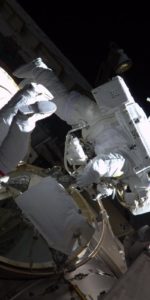
Will NASA release maps of Jupiter’s magnetic field(s) soon? We’ve been informed that Jupiter’s mag. field extends all the way out to Saturn’s orbit… how much of that can be detected by JUNO’s instruments? Can’t wait to see the data!